Special Report
All 20 WWII American Carrier-Based Planes, Ranked by How Many Were Built During the War
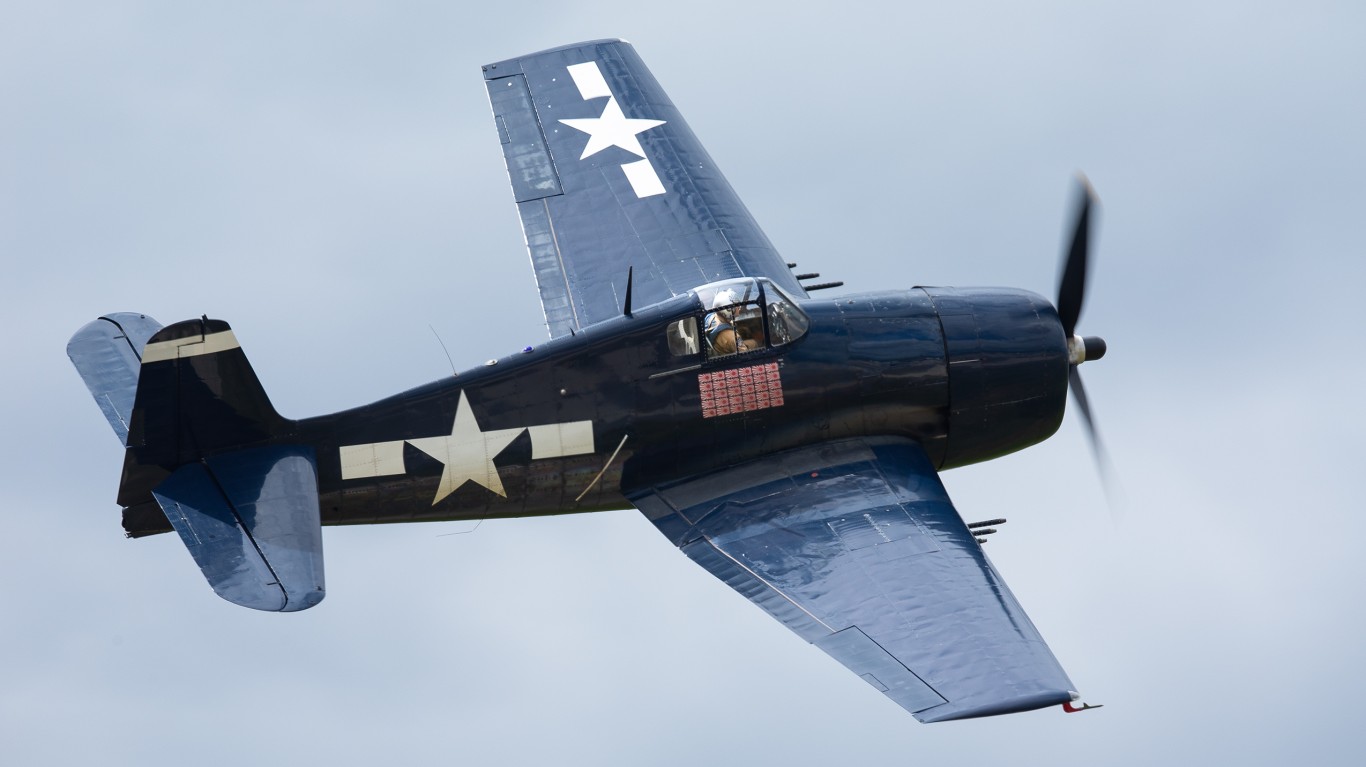
Published:

Aviation technology took several major leaps forward during the second world war, perhaps most notably for carrier-based aircraft. These are planes that can take off and land from the flight deck of a carrier. For the first time during a major war, these giant vessels became mobile airfields, and they played an absolutely crucial role in the Pacific Theater.
24/7 Wall St. identified every carrier-based aircraft the United States used during WWII. To do so, we referenced U.S. naval aircraft in the WWII era from online military equipment database Military Factory, an online database of military vehicles, aircraft, arms, and more. The planes were listed in ascending order on production totals. We excluded prototype aircraft or those with limited production runs were excluded. Supplemental information about the aircraft’s type, crew size, top speed, roles, and year entered service also came from Military Factory.
The Grumman F4F Wildcat was the initial production line fighter aircraft used by the U.S. Navy and Marines. It served as the primary carrier-based fighter in the early stages of the war in the Pacific, proving to be an exceptionally rugged and reliable aircraft. (Also see, these are the most produced aircraft by any nation during WWII.)
As the war progressed, the United States introduced the F6F Hellcat, a more advanced fighter aircraft. The carrier-borne aircraft improved upon the design of the Wildcat and boosted the odds against its adversaries. The Hellcat’s introduction into service was timely, as it played a decisive role in turning the tide against the Japanese from the Caroline Islands to the Battle of the Philippine Sea and beyond. (Here are the 18 biggest battles of World War II.)
Other planes on this list include aircraft capable of launching torpedoes, dive bombers, interception, and fighter aircraft. These planes played a variety of roles throughout the conflict, whether in air-to-air combat, anti-submarine warfare, ground attacks, or intelligence-surveillance-reconnaissance as seen on the list. The U.S. Navy established its dominance in the Pacific through the successful implementation of aircraft carriers and their carrier-based aircraft.
Here is a look at 20 carrier-based aircraft that the United States used in the Second World War.

20. Douglas BTD Destroyer
> Number built: 30
> Year entered service: 1944
> Type: Torpedo / dive bomber
> Crew: 1
> Top speed: 334 mph
> Roles: Ground attack (bombing, strafing), anti-ship
[in-text-ad]

19. Ryan FR Fireball
> Number built: 66
> Year entered service: 1945
> Type: Mixed-power fighter
> Crew: 1
> Top speed: 426 mph
> Roles: Air-to-air combat fighter, interception

18. Douglas TBD Devastator
> Number built: 130
> Year entered service: 1937
> Type: Navy torpedo bomber
> Crew: 3
> Top speed: 206 mph
> Roles: Ground attack (bombing, strafing), anti-ship
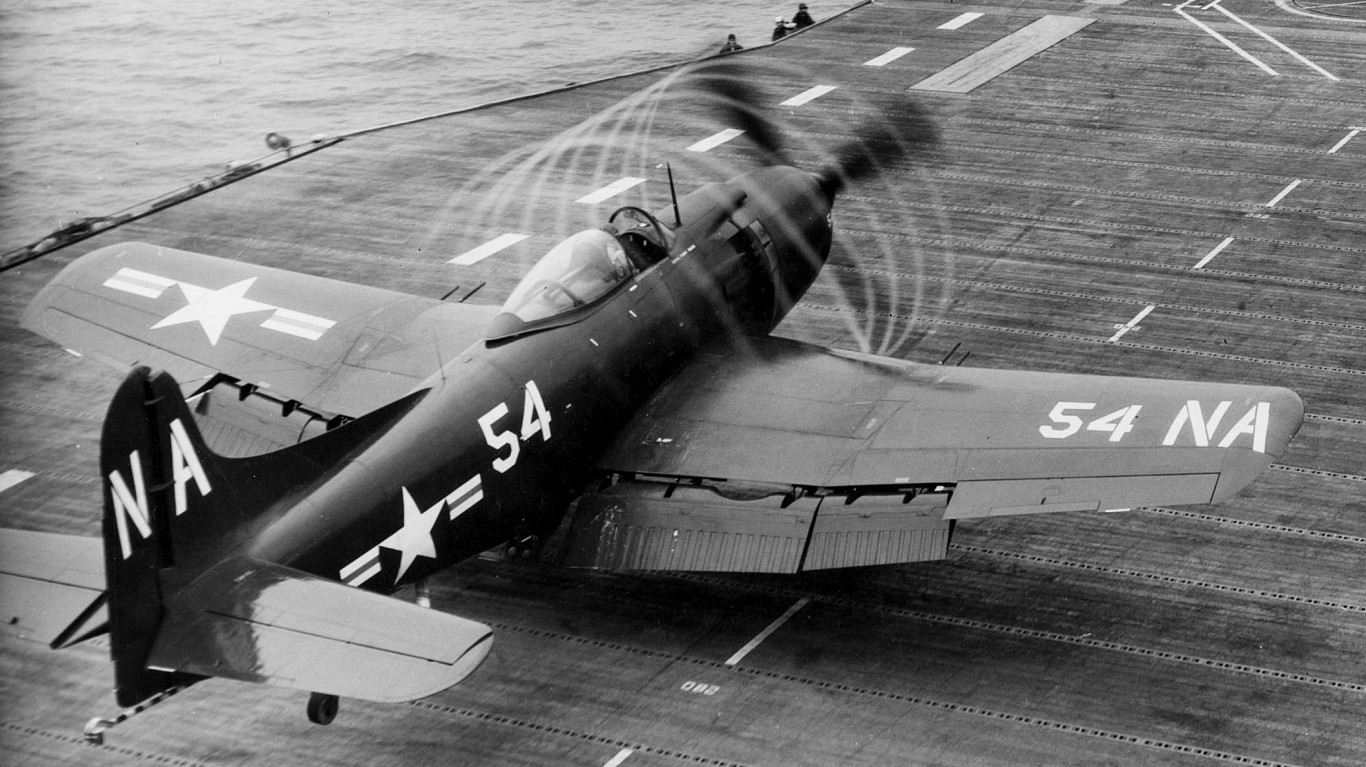
17. Martin AM Mauler
> Number built: 151
> Year entered service: 1948
> Type: Attack aircraft
> Crew: 1
> Top speed: 384 mph
> Roles: Close-air support
[in-text-ad-2]

16. Consolidated Vultee TBY Sea Wolf
> Number built: 180
> Year entered service: 1944
> Type: Torpedo bomber
> Crew: 3
> Top speed: 306 mph
> Roles: Ground attack (bombing, strafing)

15. Curtiss SBC Helldiver
> Number built: 257
> Year entered service: 1938
> Type: Naval dive bomber / fighter
> Crew: 2
> Top speed: 237 mph
> Roles: Air-to-air combat fighter, ground attack (bombing, strafing), anti-ship
[in-text-ad]
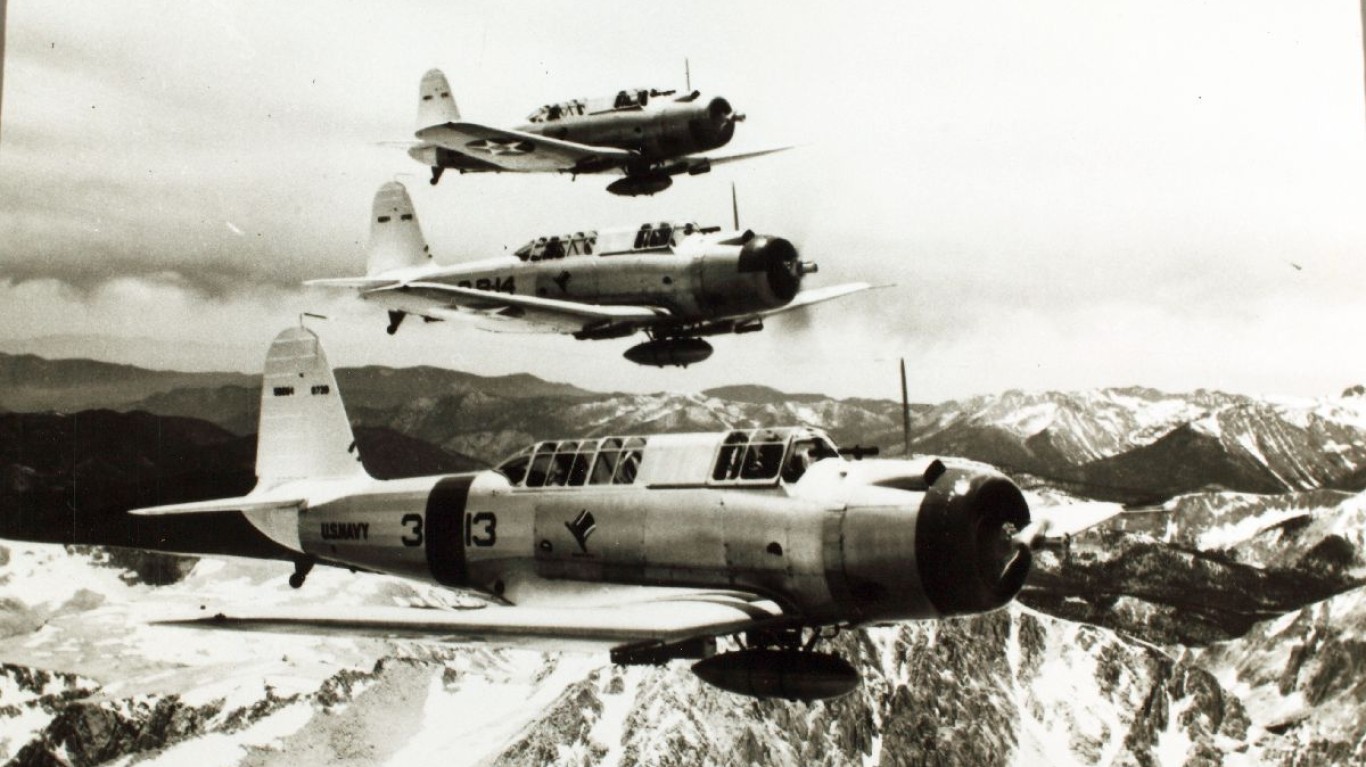
14. Vought SB2U Vindicator
> Number built: 260
> Year entered service: 1937
> Type: Dive bomber
> Crew: 2
> Top speed: 251 mph
> Roles: Ground attack (bombing, strafing), anti-ship, training
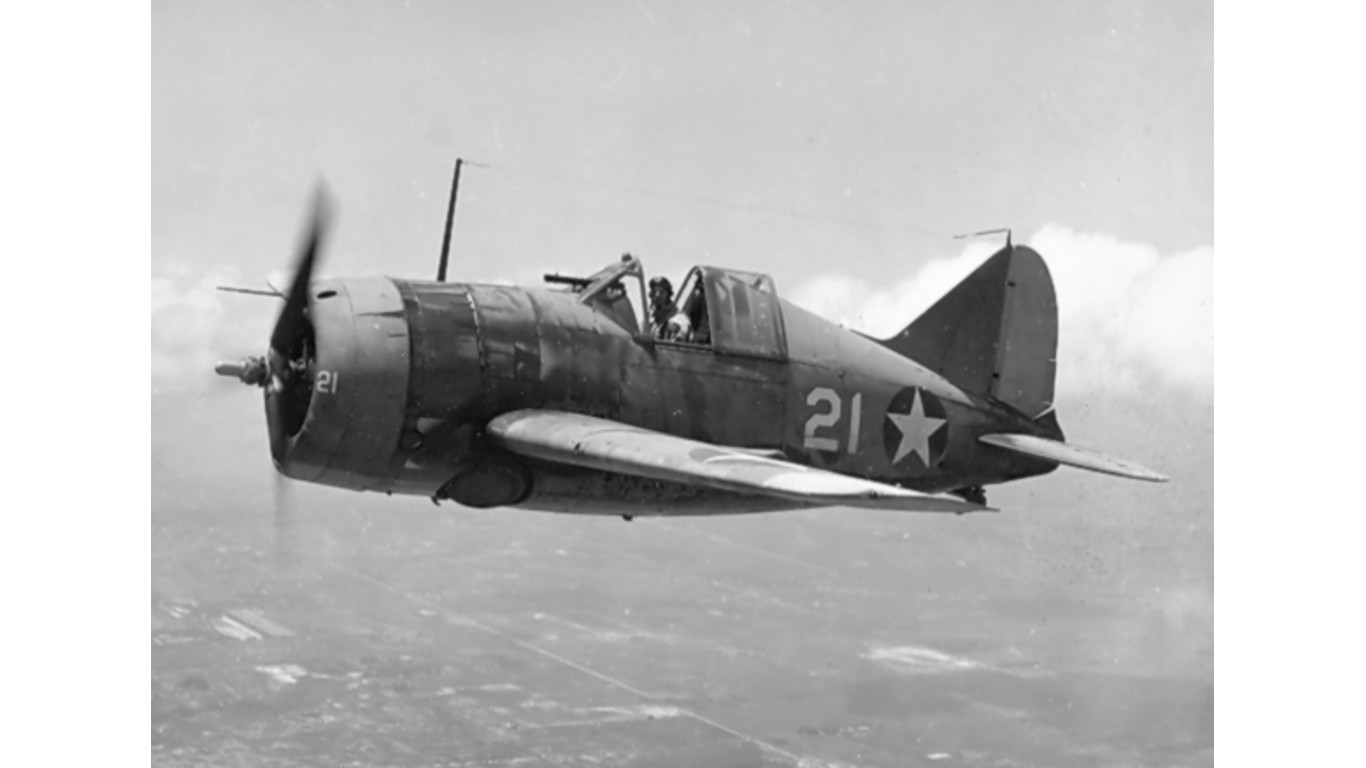
13. Brewster F2A (Buffalo)
> Number built: 509
> Year entered service: 1939
> Type: Single-seat, single-engine monoplane fighter
> Crew: 1
> Top speed: 321 mph
> Roles: Air-to-air combat fighter

12. Brewster F3A (F4U-1) Corsair
> Number built: 600
> Year entered service: 1943
> Type: Single-engine fighter
> Crew: 1
> Top speed: 416 mph
> Roles: Air-to-air combat fighter, interception, ground attack (bombing, strafing), close air support, intelligence-surveillance-reconnaissance
[in-text-ad-2]
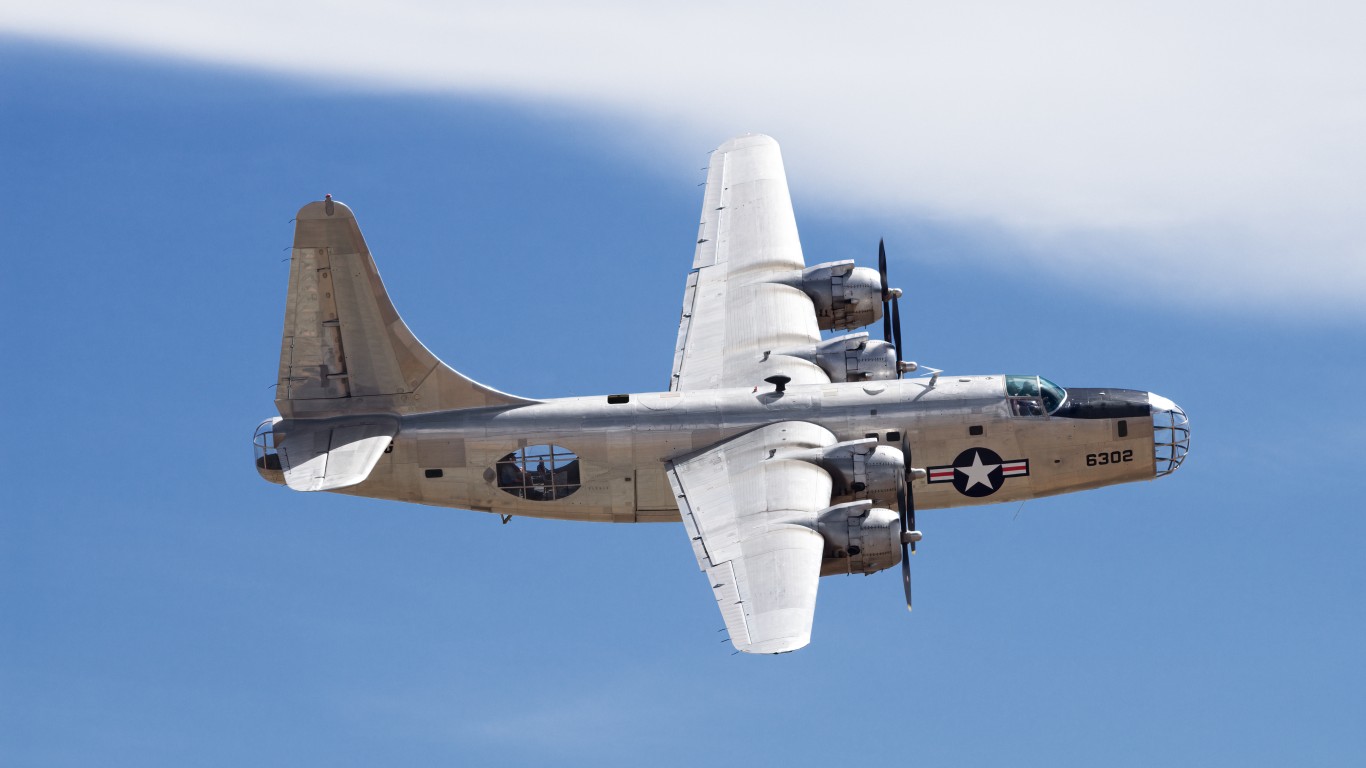
11. Consolidated PB4Y-2 Privateer
> Number built: 739
> Year entered service: 1943
> Type: Long-range maritime reconnaissance aircraft
> Crew: 11
> Top speed: 300 mph
> Roles: Ground attack (bombing, strafing), anti-submarine, anti-ship, search & rescue, intelligence-surveillance-reconnaissance
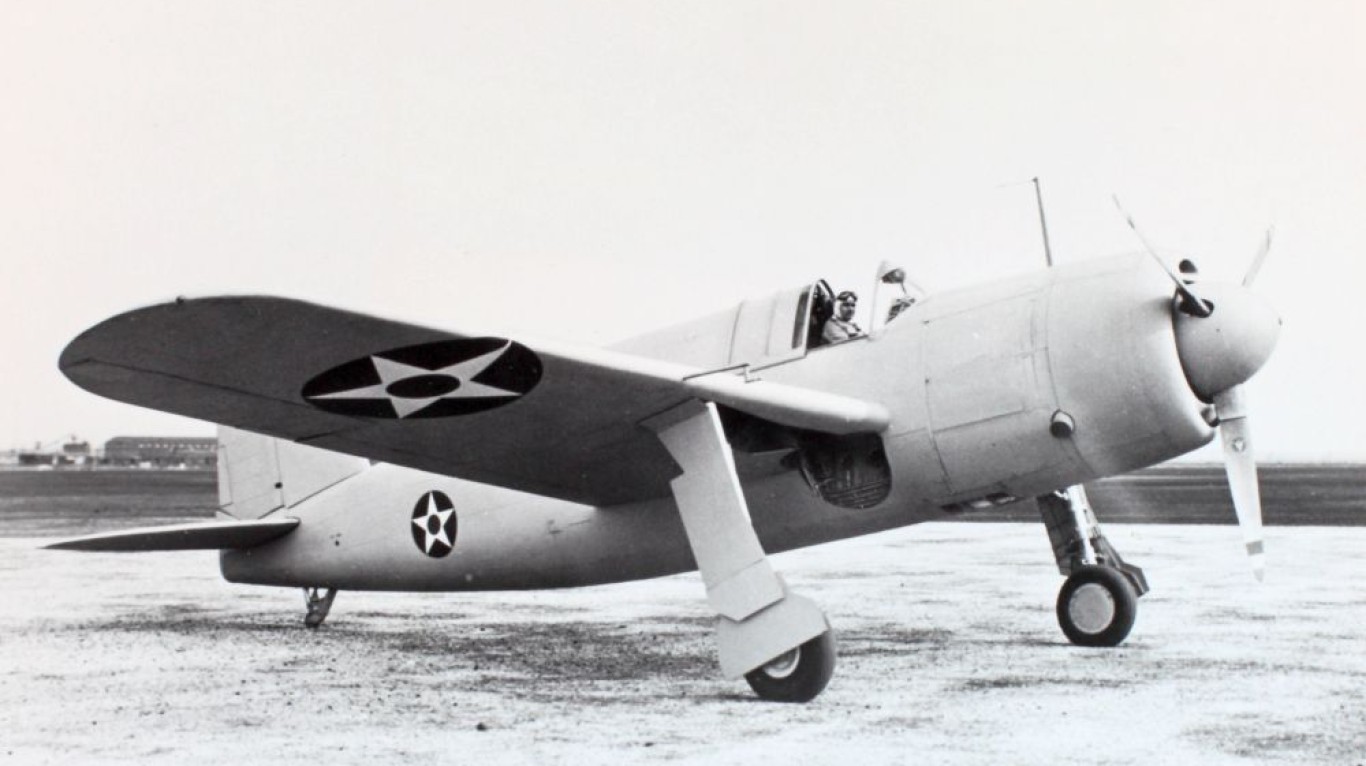
10. Brewster SB2A Buccaneer
> Number built: 771
> Year entered service: 1941
> Type: Scout bomber
> Crew: 2
> Top speed: 273 mph
> Roles: Ground attack (bombing, strafing), intelligence-surveillance-reconnaissance
[in-text-ad]
9. Grumman F8F Bearcat
> Number built: 1,266
> Year entered service: 1945
> Type: Fighter / interceptor
> Crew: 1
> Top speed: 421 mph
> Roles: Air-to-air combat fighter, interception
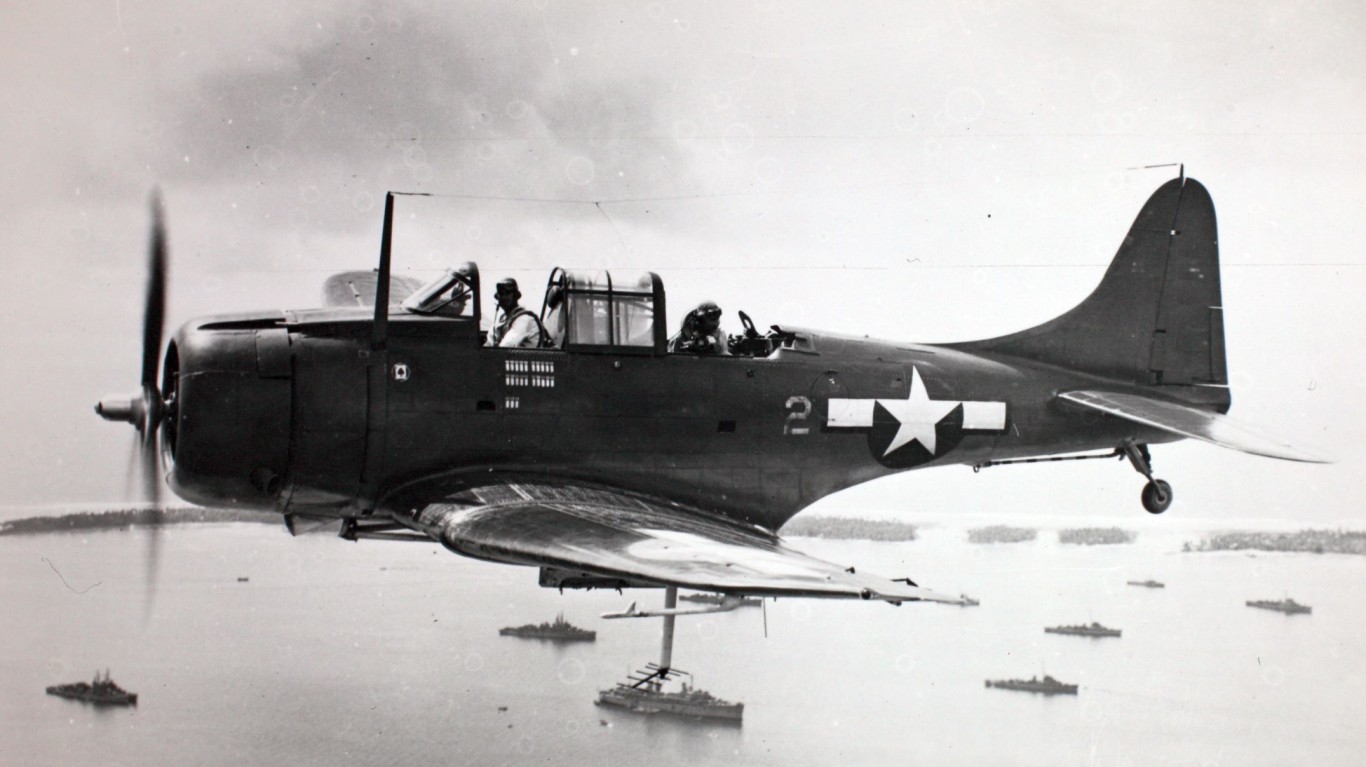
8. Douglas SBD Dauntless
> Number built: 5,936
> Year entered service: 1938
> Type: Dive bomber
> Crew: 2
> Top speed: 255 mph
> Roles: Ground attack (bombing, strafing), anti-ship

7. Curtiss SB2C Helldiver
> Number built: 7,140
> Year entered service: 1943
> Type: Dive bomber / reconnaissance aircraft
> Crew: 2
> Top speed: 260 mph
> Roles: Ground attack (bombing, strafing), anti-ship, intelligence-surveillance-reconnaissance
[in-text-ad-2]
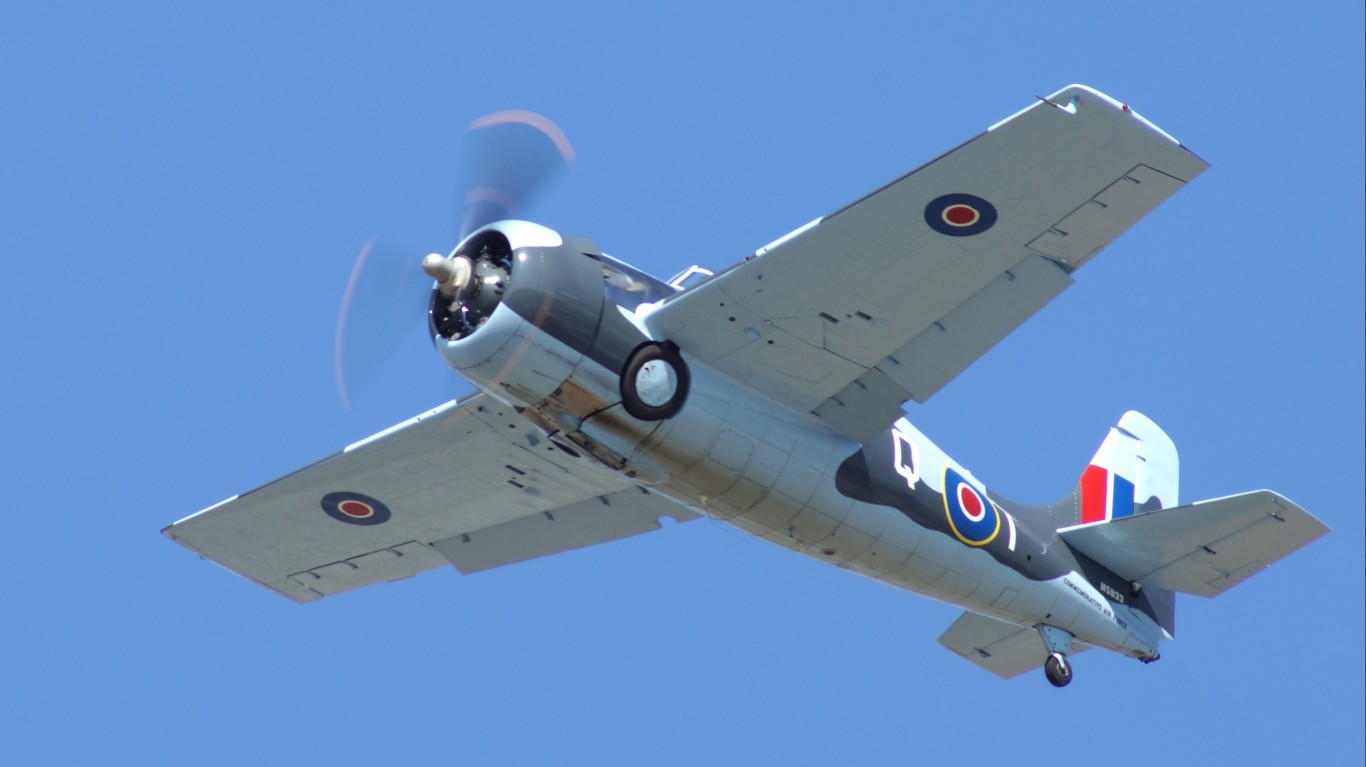
6. Grumman F4F Wildcat
> Number built: 7,722
> Year entered service: 1940
> Type: Single-seat, single-engine monoplane fighter
> Crew: 1
> Top speed: 332 mph
> Roles: Air-to-air combat fighter, ground attack (bombing, strafing)
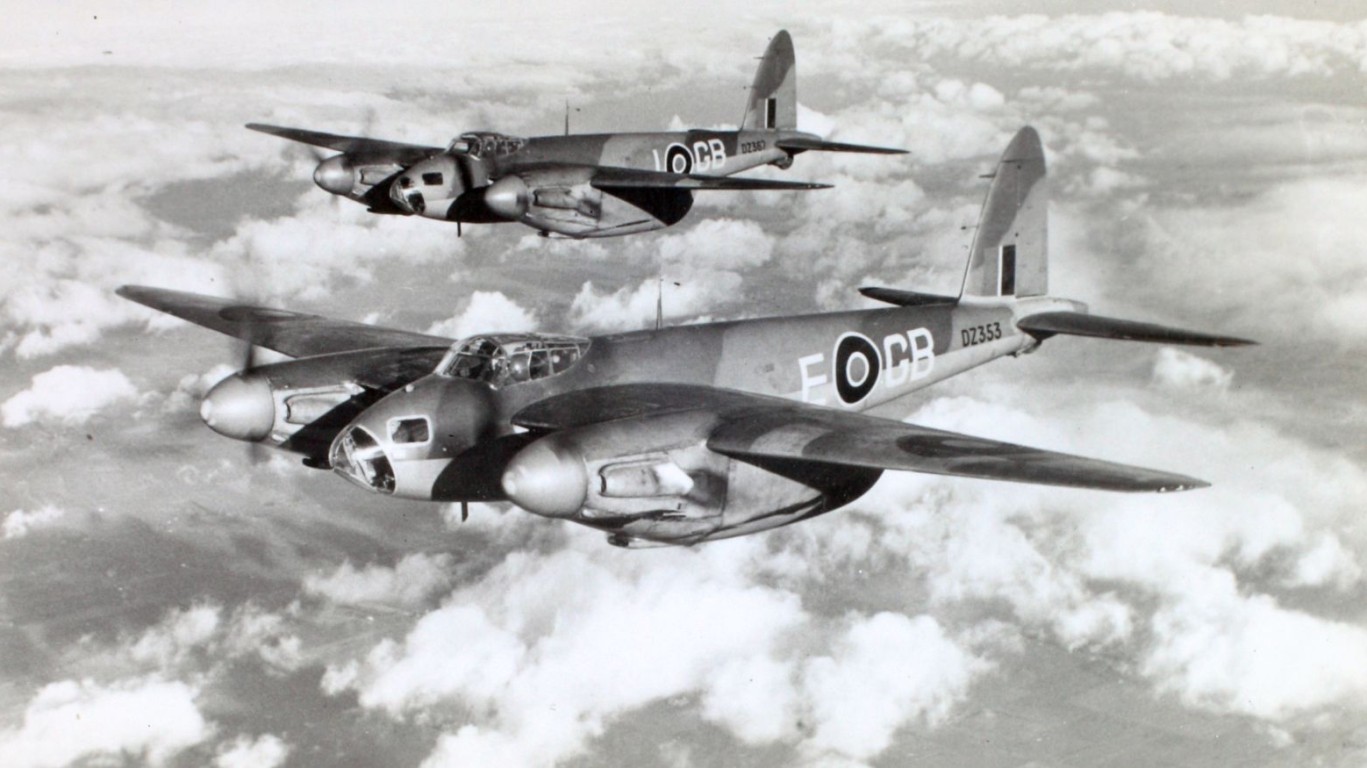
5. de Havilland DH.98 Mosquito
> Number built: 7,781
> Year entered service: 1942
> Type: Multirole heavy fighter / fighter-bomber
> Crew: 2
> Top speed: 407 mph
> Roles: Air-to-air combat fighter, interception, ground attack (bombing, strafing), close air support, anti-submarine warfare, anti-ship, intelligence-surveillance-reconnaissance, training
[in-text-ad]
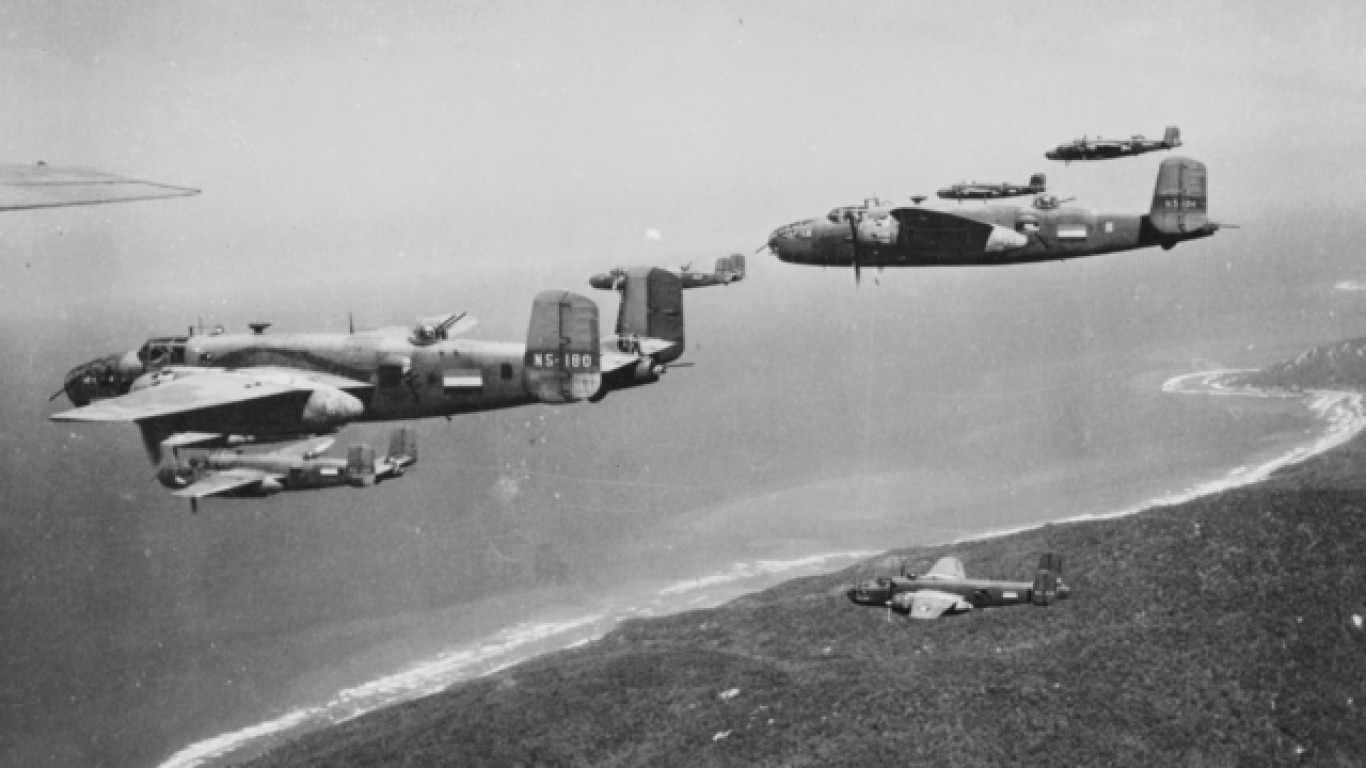
4. North American B-25 Mitchell
> Number built: 9,816
> Year entered service: 1941
> Type: Twin-engine medium bomber
> Crew: 5
> Top speed: 272 mph
> Roles: Ground attack (bombing, strafing), close-air support, anti-submarine warfare, anti-ship, transport, VIP service, intelligence-surveillance-reconnaissance, training
3. Gruman TBF Avenger
> Number built: 9,835
> Year entered service: 1942
> Type: Torpedo bomber
> Crew: 3
> Top speed: 271 mph
> Roles: Air-to-air combat fighter, ground attack (bombing, strafing), airborne early warning, anti-submarine warfare, anti-ship, electronic warfare, intelligence-surveillance-reconnaissance

2. Grumman F6F Hellcat
> Number built: 12,272
> Year entered service: 1943
> Type: Fighter-bomber
> Crew: 1
> Top speed: 380 mph
> Roles: Air-to-air combat fighter, interception, ground attack (bombing, strafing), close air support
[in-text-ad-2]
1. Vought F4U Corsair
> Number built: 12,571
> Year entered service: 1942
> Type: Fighter-bomber
> Crew: 1
> Top speed: 446 mph
> Roles: Air-to-air combat fighter, interception, ground attack (bombing, strafing), close-air support, intelligence-surveillance-reconnaissance
Credit card companies are at war, handing out free rewards and benefits to win the best customers. A good cash back card can be worth thousands of dollars a year in free money, not to mention other perks like travel, insurance, and access to fancy lounges. See our top picks for the best credit cards today. You won’t want to miss some of these offers.
Flywheel Publishing has partnered with CardRatings for our coverage of credit card products. Flywheel Publishing and CardRatings may receive a commission from card issuers.
Thank you for reading! Have some feedback for us?
Contact the 24/7 Wall St. editorial team.